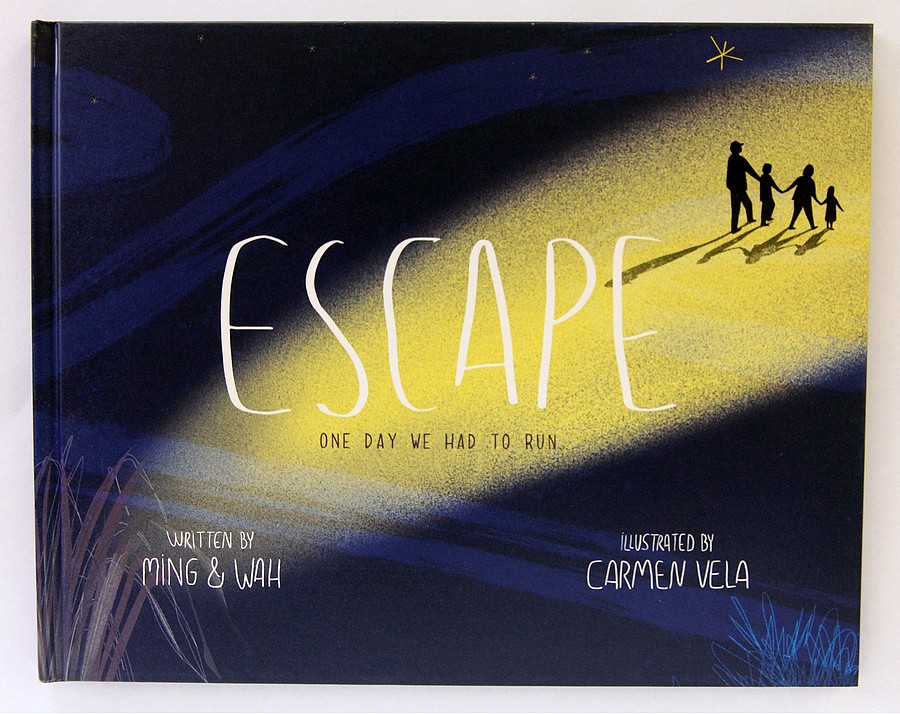
Escape: One Day We Had To Run is a picture bookby Ming and Wah and illustrated by Carmen Vela. This is a powerful collection of twelve true stories of courage and tenacity in harrowing circumstances. These are stories about desperate people fleeing their homes because of war, famine, slavery, intolerance, economic and political upheaval and there is also a story about the first legal climate change refugee. These stories contain extraordinary displays of human strength, of the mind and body, in life threatening situations, where people are driven by sheer desperation to push themselves to defy the odds. The title page says: “ES-CAPE (verb) To avoid threatening evil”. The following page lists twelve action verbs, such as cling, defy, pedal, swim and tunnel which are key to a story of escape and the tremendous obstacles that are overcome in the quest for safety. At the beginning of the book there is also a world map which shows the route for each of the journeys. The final page shows Articles 13 and 14 from The Universal Declaration of Human Rights.
Each arresting story is featured on a double page spread and features the verb and its definition, a paragraph recounting the story of escape and an illustration which adds another layer to the compelling text. There is a story of compassion about an unsung hero, Consul General Dr Feng Shan Ho who risked his life and livelihood by defying orders and issuing visas (more than 4000) to Jewish people fleeing Nazi occupied Germany. Then there is the story of Hans and Margaret Rey who fled their home in Paris on two homemade bikes shortly before the Nazis invaded Paris. They took with them a story they were creating. Their journey included days of arduous cycling, a train ride, and boat travel to their destination, New York. That story they were working on became the picture book ‘Curious George’ which went on to sell a quarter of a million copies around the world. It is fascinating to learn in this book about the first climate refugee, where he was from and how his refugee status was granted and by which world leader.
Even though these are stories relating to individuals, Carmen Vela’s characters are often represented in silhouette form, or missing facial features, symbolising to me, that many refuge stories are similar to these and are not seen or told, these are shared experiences by many refugees. The illustrations capture through style and the colour palette the individual journeys, often featuring a scribbly like illustration on the left hand page, representing the beginning of a journey, the chaos, unpredictability, urgency and fury to more solid and serene illustrations on the right hand page. A contrasting colour palette is employed with darker colours used to depict a person/people leaving a desperate and dangerous situation to lighter colours illustrating the final destination, a safer place and one where hope exists.
This book is an excellent resource to start conversations about refugees, heroes and the power of an indomitable spirt in the face of adversity. It’s also a wonderful springboard for children to research more about the countries and people mentioned.
